企业营业执照已认证!
电话:021-54397372
手机:15618141270
扫码通过手机查看
1.全质构分析的介绍
全质构分析(TPA)通常是对样品进行两次压缩,来测定食品的质构特性。它也可以应用于其他领域,包括药物、胶体和个人护理品等。在TPA分析中,样品被质构仪探头两次挤压来探究样品被咀嚼时的变化。所以TPA测试也经常被叫做“两次咬合测试”,因为质构仪的TPA分析主要是模拟人嘴巴的咬合动作。
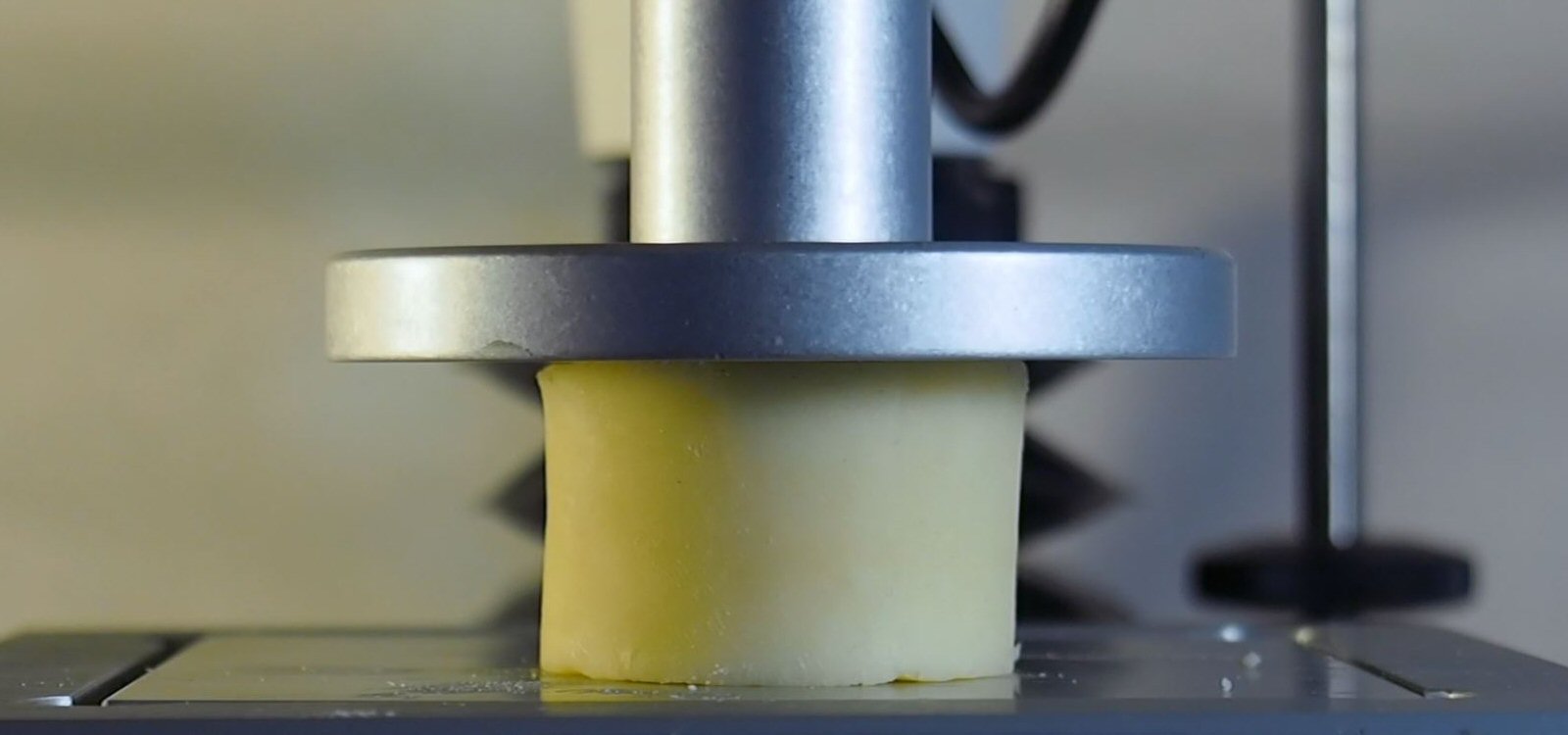
任何食品的质构都是多方面的,而且和消费者的感官期望相联系。如果消费者不喜欢这种食品,仅仅用硬度和弹性来描述这种食品是不够的,它也不能满足人们对某种食品类型的期望和整体印象描述。TPA分析方法的优点在于它能够在一次实验过程中将多种质构参数定量出来。
2 全质构分析的由来
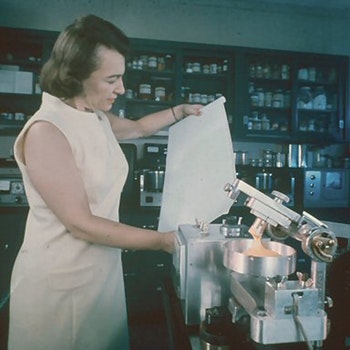
开始的TPA方法和参数设定是由一个食品科学家(Dr. Alina Surmacka Szczesniak)在19世纪60年代早期提出。Dr. Szczesniak早期的研究主要集中于理解消费者在品尝一系列食品之后感受到的质构特性,并将这些感觉进行分类成能够客观定量的模量。尽管感官质构评价非常理想,但是非常浪费时间,而且成本也非常昂贵。所以一个仪器分析方法就显得非常必要了。所以,Dr. Szczesniak团队研发出了一台仪器,名字叫General Foods Texturometer。
3 TPA参数如何计算?

参数 | 定义 | 计算 | |
Hardness (硬度) | The maximum force of the 1st compression. | Same | |
Fracturability(脆性) | The force at the first peak | Peak Force at F1 | |
Cohesiveness(内聚性) | The area of work during the second compression divided by the area of work during the first compression. | Area 2/Area 1 | |
Springiness (弹性) | Springiness is now expressed as a ratio or percentage of a product's original height. Springiness is measured several ways, but most typically, by the distance of the detected height during the second compression divided by the original compression distance. | Distance 2 / Distance 1 | |
Gumminess (胶着性) | Gumminess is mutually exclusive with Chewiness since a product would not be both a semi-solid and a solid at the same time. | Hardness * (Area 2/Area 1) | Hardness x Cohesiveness |
Gumminess applies only to semi-solid products and is Hardness * Cohesiveness (which is Area 2/Area 1). | |||
Chewiness (咀嚼性) | Gumminess * Distance 2 / Distance 1 | Hardness x Cohesiveness x Springiness | |
Chewiness applies only to solid products and is calculated as Gumminess * Springiness (which is Distance2/Distance1). | |||
Resilience (回复性) | It is calculated by dividing the upstroke energy of the first compression by the *** energy of the first compression. | Area 4/Area 3 | |
4 典型的TPA曲线
(1)小麦面包TPA曲线
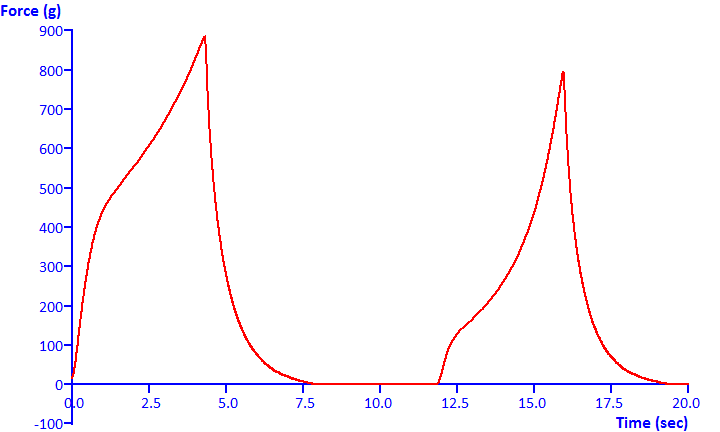
(2)热狗TPA曲线

(3)切达奶酪TPA曲线
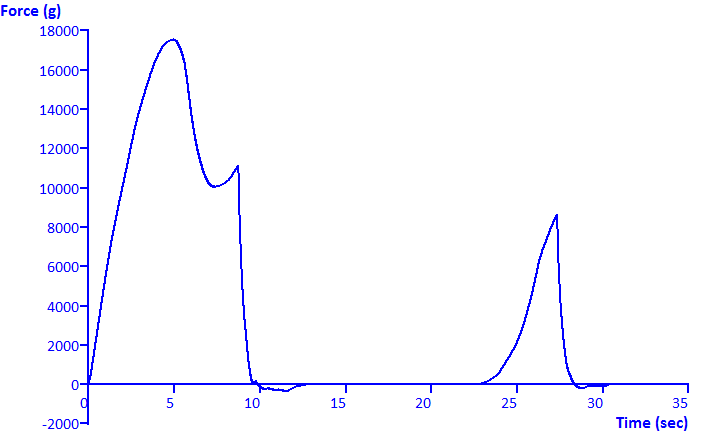
(4)挤压制品TPA曲线
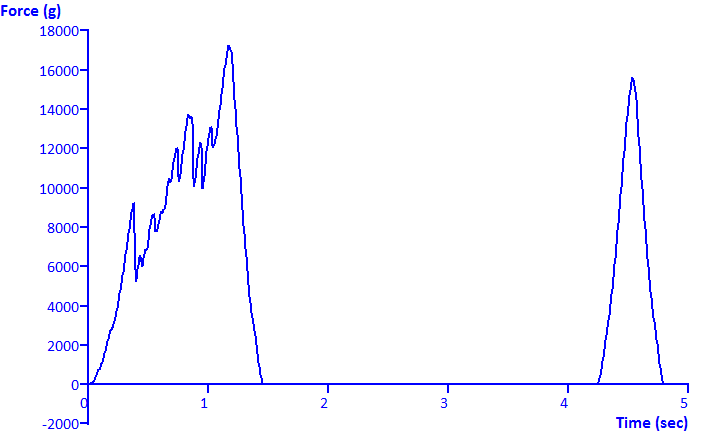
(5)生面团TPA曲线
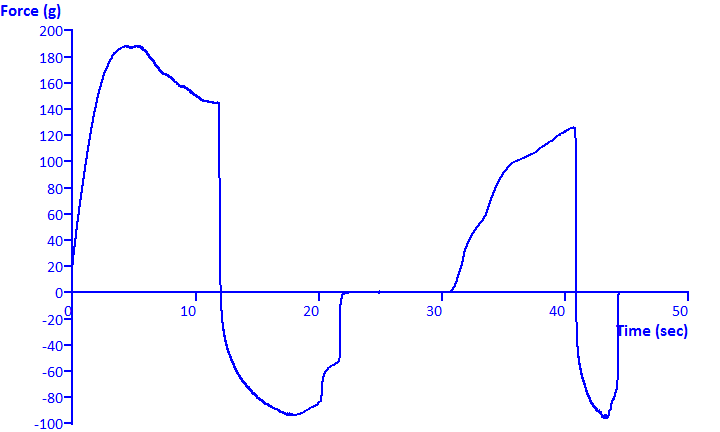
(6)意大利面TPA曲线
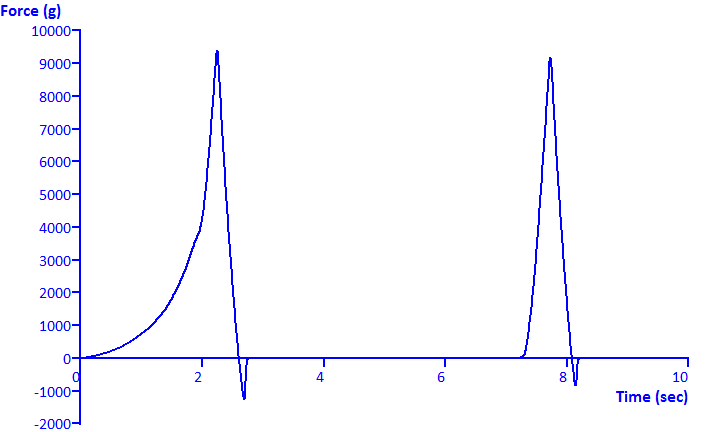
(7)凝胶TPA曲线
